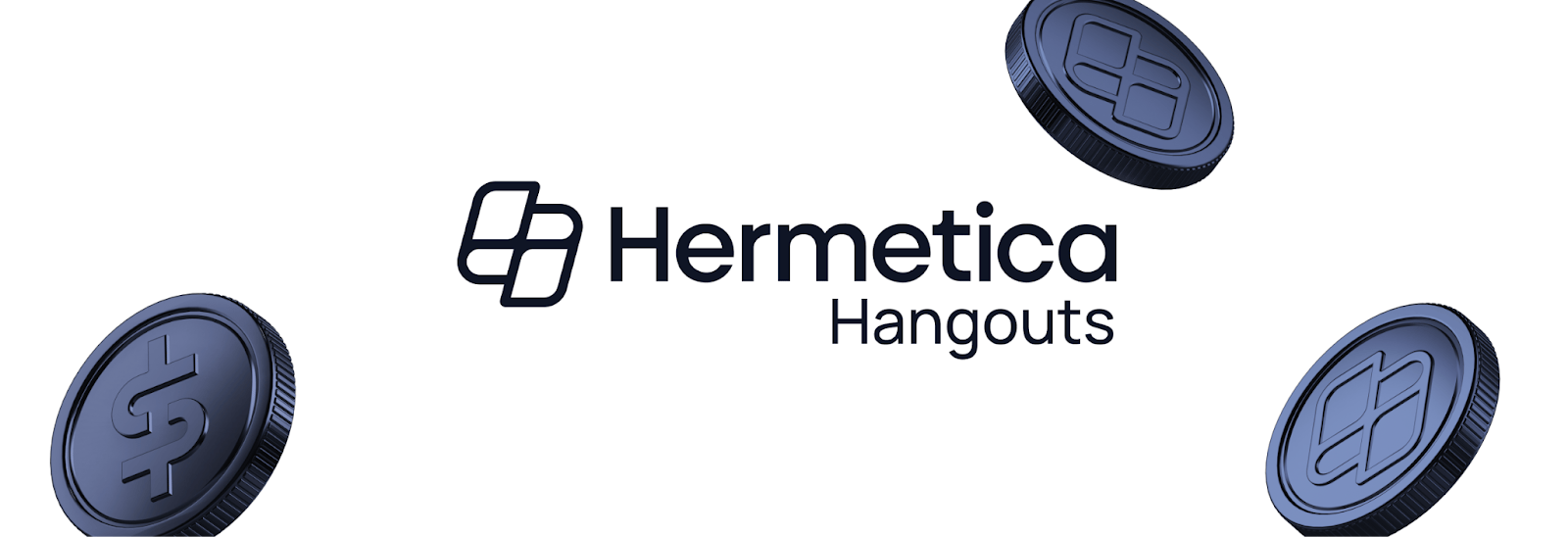- Hermetica
- Posts
- Weekly Update - November 7, 2025
Weekly Update - November 7, 2025
Earn Bitcoin Yield

IN THIS ISSUE
🪙 Earn Bitcoin Yield
🗞️ How hBTC Works
🔗 WalletConnect integrates Stacks
💰 USDh Yield Recap
☎️ Hermetica Hangout: hBTC
📈 Weekly Market Review
Earn Bitcoin Yield

We announced our newest product, hBTC. The BTC yield product Bitcoin deserves.
Earn up to 8% APY.
◾ BTC in / BTC out
◾ Non-custodial
◾ Transparent
hBTC earns from the most profitable strategies, including basis arbitrage, lending markets, staking, AMM liquidity, and RWAs, converting all yield back to BTC.
Coming this winter. Access is exclusive to our waitlist.
Don’t miss out, subscribe now:Be the First to Know
How hBTC Works

hBTC is Bitcoin yield made easy.
hBTC deploys BTC into the most profitable on-chain strategies in BTCfi.
Earn up to 8% APY at launch:
🔸 3-4% from basis arbitrage
🔸 3-4% from Stacks Dual Stacking
All profits are converted to BTC and distributed daily
Over time, more strategies will be added to diversify yield sources.
WalletConnect integrates Stacks

Bitcoin DeFi and BTC yield access is now available to millions of users worldwide as Stacks integrates with WalletConnect.
WalletConnect enables secure connections between wallets and apps across ecosystems like Ethereum, Solana, and now Bitcoin DeFi through Stacks.
We’ll soon add WalletConnect to our app, keep an eye out👀
USDh Yield Recap

Week 45 recap:
◾ You met hBTC
◾ USDh earned 5% APY
BTCfi is looking good.
Hermetica Hangout: hBTC

This week, we hosted a special community hangout to unveil hBTC.
Want to learn how hBTC delivers up to 8% Bitcoin yield through the most profitable on-chain strategies? Catch the recording here.
Follow our X for the latest from Hermetica and other BTCFi builders.
Market Review
Bitcoin is down almost 20% from all-time highs. Price is only slightly above the $100,000 level. Aggregated altcoin market caps fell from $1.46T to $1.34T. Bitcoin dominance rose 0.26% this week, peaking 1.4% higher mid-week, the fifth consecutive week of increases.
• DVOL: 45.84%
• Equal-weighted futures basis spread: 3.59% APR
• Futures curve steepened; front contracts decreased
• Perp funding rates remain near zero, with brief negative dips

Figure 1: BTC Price, Daily Candles, & Moving Averages; 2 years; Source: Binance

Figure 2: Crypto Market Cap Excluding Bitcoin, Daily Candles, & Moving Averages; 2 years

Figure 3: Bitcoin Dominance, Daily Candles, & Moving Averages; 2 years
The moving averages (MA) in Figure 1 are:
Current Price: $101,900
7-Day MA: $105,100
30-Day MA: $109,800
180-Day MA: $111,700
360-Day MA: $102,600
200-Week MA: $54,900
Bitcoin is below the 7-day, 30-day, and 180-day moving averages (MAs) and, for the first time this year, below the 360-day MA.
Trend Following
Returns for a Bitcoin 7-day and 30-day long trend-following portfolio are down 7.36% from January’s ATH and have remained unchanged for the past 9 days. The portfolio dropped during the crash on October 10 and subsequently turned off. Since then, it has reactivated four times, suffering small losses on each occasion.

Figure 4: Bitcoin 7 & 30-day Trend Following Strategy Returns
BTC ETF Flows
Net outflows totaled $842M this week. Cumulative outflows have not yet offset the inflows from the week of October 10th, when Bitcoin reached a new all-time high. Consequently, many TradFi investors continue to hold Bitcoin at a loss.

Figure 5: Bitcoin ETF Flows, Daily Bars; Source: The Block
Volatility
Bitcoin’s implied volatility (DVOL) remains elevated at 45.84%, despite falling from the 50%+ range seen in October.
Implied volatility hit a two-year low in late September. Volatility is now stable between 40% and 50%, diverging from the long-term downtrend of the past 18 months.
Volatility had been in a long-term decline due to market maker options hedging across Bitcoin-related products such as ETFs, Bitcoin treasury companies, and mining firms.

Figure 6: DVOL 2 Years; Bitcoin Index Price; Source: Deribit
Basis Spread
The basis spread, or the price of a futures contract over its spot price, remains positive across all maturities. The average (equal-weighted) basis spread fell from 5.93% APR to 3.59% APR week-over-week.
The futures curve is in a normal contango, with the front month (November 28th) trading below later maturities. The spread between the lowest- and highest-yielding maturities widened from 1.77% to 7.39%. The change in spread stems from the two weekly contracts (November 14th and November 21st), which are trading below later-dated contracts.

Figure 7: Futures Curve; Maturity Date, APR %
Macro
On October 30th, the Fed cut rates by 25 bps to 3.75–4% and ended its quantitative tightening (QT) program. QT had already slowed to $5B in monthly Treasury runoff, compared to $25B a week at its peak last year. Changes in quantitative tightening (QT) affect market liquidity and credit creation.
Canada cut interest rates 25 bps to 2.25% on October 29 following the Fed’s decision a few days earlier. No other major central banks have lowered their interest rates since the Fed meeting last week.
30-year bonds’ yields decreased to 4.71%. Gold and silver prices reached a record high of $4,380.00 and $54.49 per ounce, respectively. Both US Treasury bond implied volatility (MOVE) and equity market implied volatility (VIX) are near long-term steady states but rising due to market turmoil this past week. The VIX rose from 16.14% to 19.69% while the interest rate-adjusted MOVE index (MOVE index/10-Year Treasury Bond Yield) rose from a 6-year low of 16.28% last week to 17.64% today.

Figure 8: VIX, Daily Candles; 2 Years

Figure 9: Move Index/US10Y, Daily Candles; 2 Years
Sincerely,
The Hermetica Team